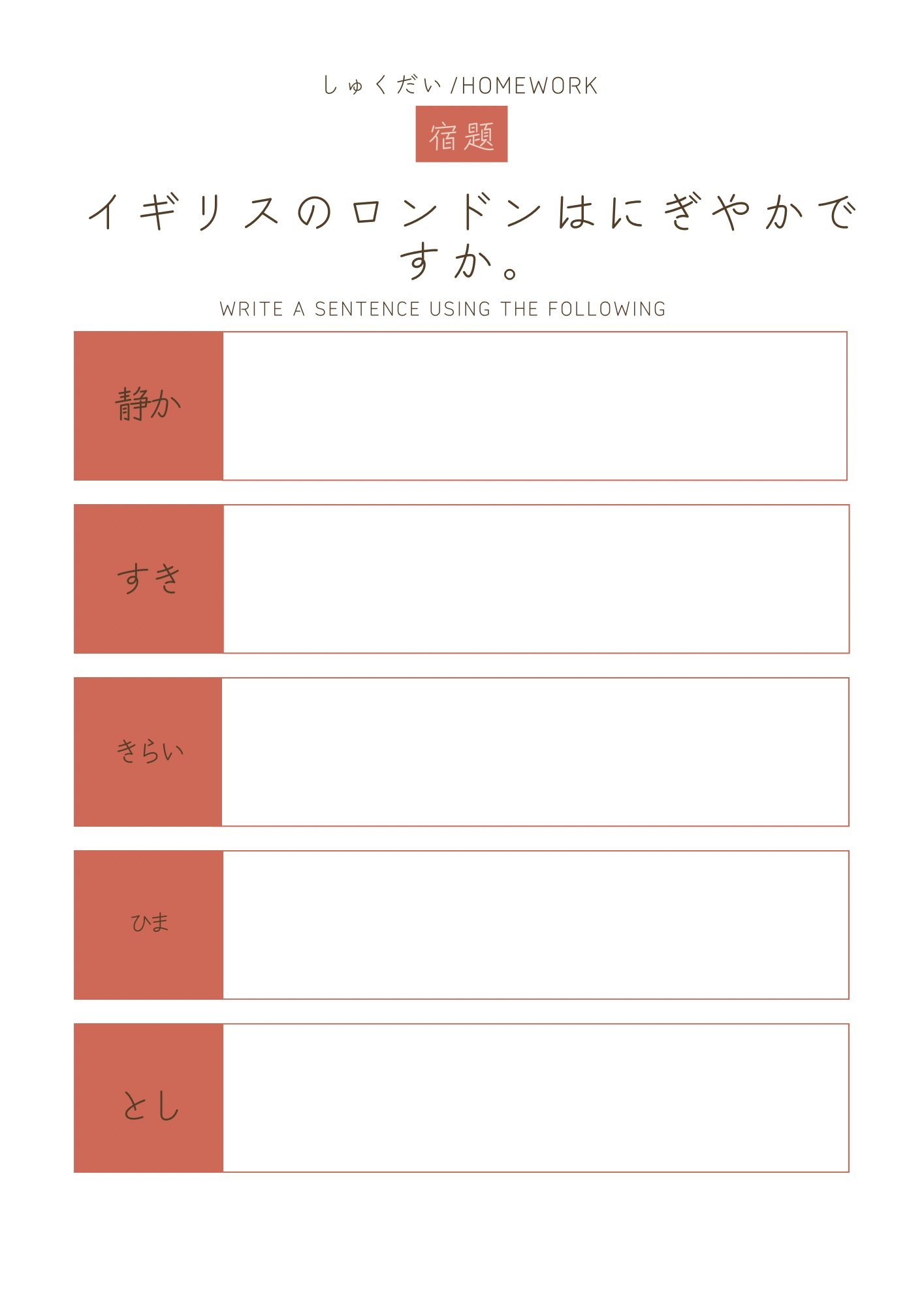発表二十六
おすすめビデオ
We will do the が particle in a later lesson as it can be a tad confusing ! For now, here’s a reminder of the particles we’ve already looked at!
漢字宿題



単語リスト
な けいようし
げんき(な) = Healthy (元気)
しずか(な) = Quiet (静か)
にぎやか(な) = Lively
かんたん(な) = Easy (簡単)
ひま(な) = Free (not busy)
すき(な) = To like
きらい(な) = Dislike
Nouns
まち = Town
とし = City
けいようし = Adjectives
な けいようし
You may have noticed the な is in brackets. This is because it’s mainly used when modifying nouns, and dropped in other situations:
ひまな時間 = Free time
今日、ひまな時間がありません。Today, I don’t have free time.
Modified noun = Adjective RIGHT INFRONT Of noun. The な is used when you’re modifying the noun.
When you are saying ‘this city is lively’, because you’re not directly modifying the noun, (adjective right in front of the noun) you do not need the な。
In When the adjective is not right in front of the noun, you don’t need the Na.
としはにぎやかです。= The City is Lively
Vs
にぎやかなとしです。It’s a lively city.
The message is the same, the translation is slightly different!
メモ:
Did you know that い けいようし are of 日本 origins, whereas な けいようし originate from 中国。This is explains their different conjugation methods!
I like…
私はこのレストランがすきです。
(が) すき - is to like. This is considered an な adjective in Japanese. The sentence structure is pretty simple!
Subject は object- がすきです。
私はラーメンがすきです。
It can be used with other particles such as the は particle, but we will go into this in the future, as it changes the sentence meaning!
To Dislike…
To dislike is きらい. It is also a な adjective.
Subject は Object が きらい です。
私はこのにぎやかなレストランがきらいです。This lively restaurant, I dont like.
宿題
Please complete the writing task for the next lesson!


Quizlet Flashcards: https://tinyurl.com/Ikou27
